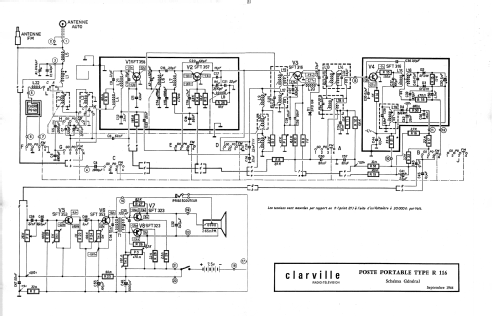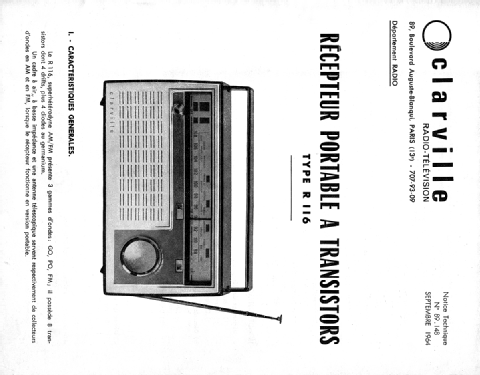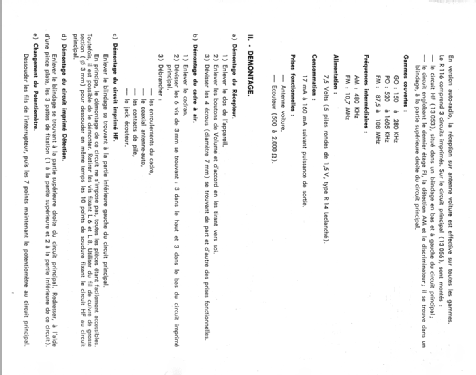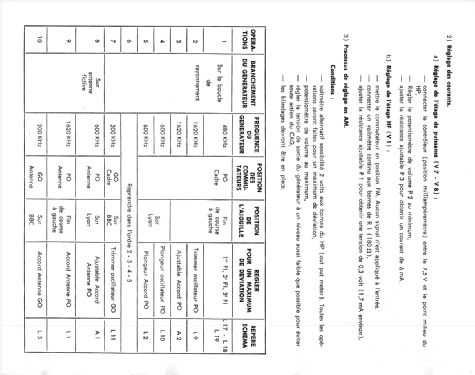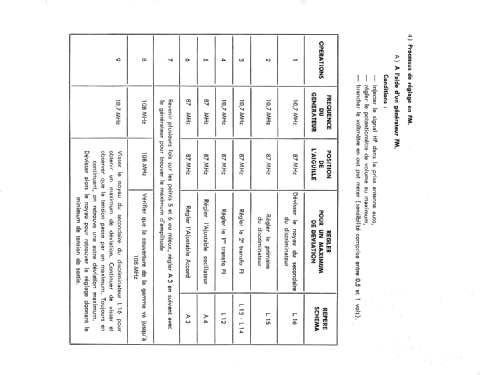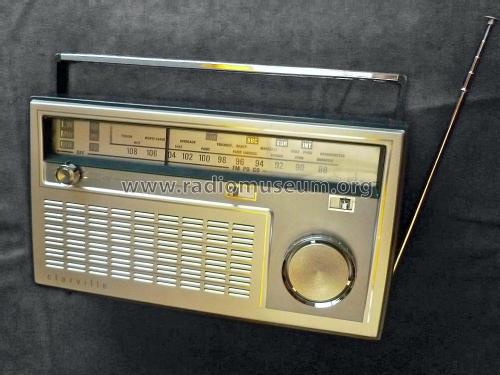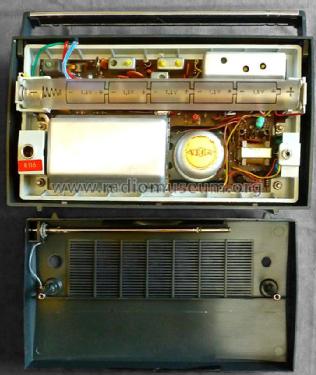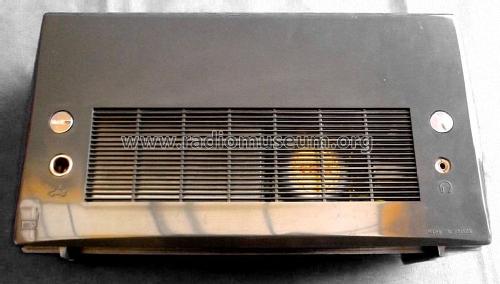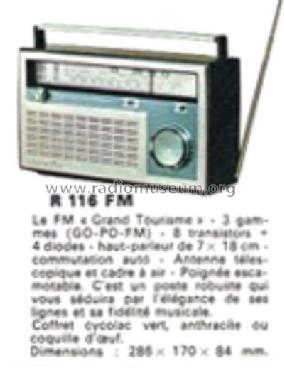- Pays
- France
- Fabricant / Marque
- Clarville (CSF); Paris, Levallois-Perret
- Année
- 1964/1965
- Catégorie
- Radio - ou tuner d'après la guerre 1939-45
- Radiomuseum.org ID
- 260677
Cliquez sur la vignette du schéma pour le demander en tant que document gratuit.
- No. de transistors
- 8
- Semi-conducteurs
- SFT358 SFT357 SFT316 SFT316 SFT353 SFT353 SFT323 SFT323 SFD106 SFD107 SFD111 SFD111
- Principe général
- Super hétérodyne (en général); FI/IF 480/10700 kHz; 3 Etage(s) BF
- Circuits accordés
- 5 Circuits MA (AM) 8 Circuits MF (FM)
- Gammes d'ondes
- PO, GO et FM
- Tension / type courant
- Piles sèches / 5 x 1,5 Volt
- Haut-parleur
- HP dynamique oval à aimant permanent
- Matière
- Plastique moderne (pas de bakélite, ni de catalin)
- De Radiomuseum.org
- Modèle: R116 FM - Clarville CSF; Paris,
- Forme
- Portative > 20 cm (sans nécessité secteur)
- Dimensions (LHP)
- 286 x 170 x 84 mm / 11.3 x 6.7 x 3.3 inch
- Remarques
-
3 gammes d'ondes : GO de 150 à 280 kHz, PO de 520 à 1605 kHz, FM de 87,5 à 108 MHz. Cadre à air pour AM, antenne télescopique pour FM. HP elliptique de 7 x 18 cm, Z = 65 ohms. Prises antenne voiture et écouteur (500 à 2000 ohms).
Coffret en matière plastique cycolac, vert, anthracite ou coqille d'oeuf. Façade en aluminium.
Gehäusefront in Aluminium. Elliptischer Lautsprecher 7 x 18 cm.
- Poids net
- 2 kg / 4 lb 6.5 oz (4.405 lb)
- Littérature
- -- Original-techn. papers.
- Schémathèque (1)
- -- Original prospect or advert
- Auteur
- Modèle crée par Wolfgang Grafeneder. Voir les propositions de modification pour les contributeurs supplémentaires.
- D'autres Modèles
-
Vous pourrez trouver sous ce lien 211 modèles d'appareils, 183 avec des images et 59 avec des schémas.
Tous les appareils de Clarville (CSF); Paris, Levallois-Perret
Contributions du forum pour ce modèle: Clarville CSF; Paris: R116 FM
Discussions: 1 | Publications: 1
Das Gerät weist zwei technische Besonderheiten auf:
- Für MW und LW (PO und GO) dient statt einer Ferritantenne eine Rahmenantenne.
- Die Abstimmung erfolgt auf allen Bereichen mittels Variometer. So werden beim Abstimmen 4 Variometer (AM und FM, jeweils Eingang und Oszillator) mechanisch parallel bewegt.
Beachtlich ist weiters, dass das Gerät bereits über einen UKW-Bereich verfügt - bei französischen Geräten der 60er Jahre durchaus eine Seltenheit.
Wolfgang Grafeneder, 20.Jul.15
